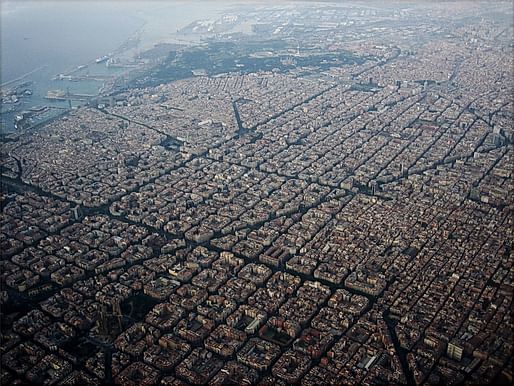

In the latest attempt from a big city to move away from car hegemony, Barcelona has ambitious plans. Currently faced with excessive pollution and noise levels, the city has come up with a new mobility plan to reduce traffic by 21%. And it comes with something extra: freeing up nearly 60% of streets currently used by cars to turn them into so-called “citizen spaces”. — The Guardian
"The plan is based around the idea of superilles (superblocks) – mini neighbourhoods around which traffic will flow, and in which spaces will be repurposed to “fill our city with life”, as its tagline says."
A precedent for Barcelona's superblocks was actually instituted in the city back in the late 19th century when Ildefons Cerdà planned Eixample, a district intended to free up the crowded medieval neighborhoods of the old city. With their famous beveled corners, Cerdà's large residential blocks were intended to serve as lungs for the city, with interior courtyards to provide greenery on a regular and frequent basis.

But urban development laid waste to Cerdà's carefully-laid plans. Today, the city loses about 3,500 citizens each year to air pollution.
The bold new plan comprises a series of interventions to create "superblocks" from nine of Cerdà's smaller blocks. The initiative starts with restricting vehicular traffic to primarily the perimeter streets.
City officials hope that by implementing their strategies all at once, car use will be reduced 21% in the next two years.

To find out about other urban initiatives to curb air pollution, check out these links:
No Comments
Block this user
Are you sure you want to block this user and hide all related comments throughout the site?
Archinect
This is your first comment on Archinect. Your comment will be visible once approved.